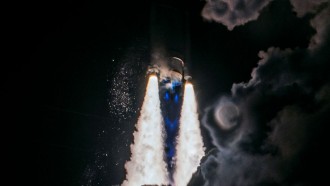Marine experts in the state of Washington report that debris from the 2011 tsunami disaster in Japan continue to reach the shores of the United States, carrying parasites and other invasive species along with them.
The Department of Fish and Wildlife said the latest debris they recovered was a 25-foot boat found along a remote shoreline near La Push in Clallam County. Members of the agency's aquatic invasive-species unit described the Japanese vessel as encrusted with barnacles.
The team was created to remove marine debris from American shores and prevent invasive marine species from spreading.
Allen Pleus, the unit's coordinator, joined up with technician Nancy Franco in investigating the Japanese boat for potential invasive species. They collected biological samples and sent them to different scientists around the country for further analysis.
While the vessel does have faded Japanese characters painted on its hull, the fish and wildlife department has yet to confirm if it is indeed debris from the 2011 tsunami disaster.
Another 30-foot boat was recovered recently near Long Beach but has yet to be identified as tsunami debris as well.
Pleus explained that the consulate of Japan requires registration numbers or other means for official identification before the vessels could be considered as tsunami debris.
The aquatic invasive-species unit handled nearly 40 projects last year. Pleus and his team have seen different kinds of debris in the past few years since the tsunami hit Japan, including tires, refrigerators, boats and even sections of docks.
Some of these objects have already been colonized by marine species that were able to survive and thrive during the trip. Not all debris carry invasive species, but some do carry invasive species that could pose a threat to the local marine ecology and species by competing with native fish and wildlife for food and habitat and eating them. The fact that fish, which are vertebrates, made the trip may cause biologists to revise how they think about the impact of invasive species.
Pleus said one such species was the tropical striped beakfish that was believed to have been picked up when the debris passed by the waters near Hawaii. The fish was able to acclimate itself in the colder waters of the Pacific Northwest while still inside the debris. The boat harbored five fish, but only one remains alive for study and it is in an aquarium.
The Japanese boat discovered in Long Beach had more than 25 pink barnacles that were still alive.
"These become their own ecosystems in the ocean," Pleus said. "What's not natural is that they're on man-made objects that don't disintegrate."
According to the U.S. National Oceanic and Atmospheric Administration (NOAA), the bulk of the debris from the tsunami disaster can be found scattered in waters north of Hawaii and east of Midway Atoll.
Photo: NOAA's National Ocean Service | Flickr









